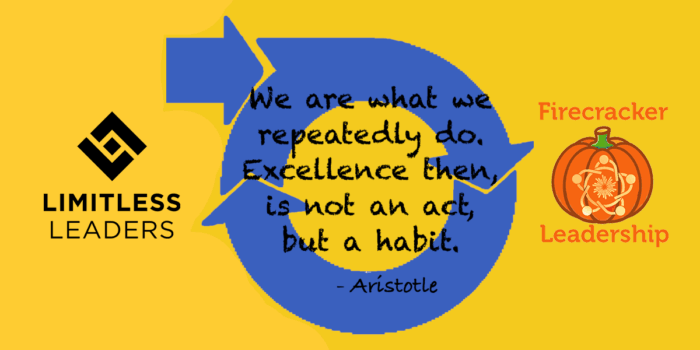Which of these do you have dialed in as we move into 2023?
Glenn Parker, “Creating a Great Place to Work,” CEOWORLD magazine,” January 20, 2022.
The ultimate measure of the man is not where he stands in the moments of comfort, but where he stands at times of challenge and controversy. — Dr. Martin Luther King, Jr.
Most leaders would prefer to learn new skills or gain additional insight into their strengths and weaknesses by taking a class, reading a book, or listening to a speaker. Typically, they would not opt for a learning environment that involved living and working on the frontlines of a full-blown international health crisis. Nevertheless, leaders in our study group told us that they learned or re-learned three very important leadership imperatives:
- A Blurring of the Lines Between Work and Family Life
- Employees Want More Empowerment and Engagement
- Creating a Great Place to Work is a High Priority
Blurring the Lines Between Work and Family Life
We learned that the pandemic reshaped the demarcation between work, family life, and employee well-being. Leaders will no longer be able to say that their responsibilities to employees end at the plant gate, the office entrance, the building lobby, or the restaurant door.
Leaders need to work with ‘the individual as a whole.’ An employee’s work persona is just one part of their wider life experience, embedded deeply with the community and wider society. Leaders must shift their mindset to acknowledge that employees’ experience goes beyond work. (Mukherjee & Krish, Oct. 4, 2021).
One organizational leader stated: “we need to be more flexible in working with each other. As long as the work gets done correctly, we must let people decide when and where the work gets done.”
As Bill Kohl of the Greenwood Hospitality Group told us in unambiguous terms: “we are not going back to ‘normal’ whatever that means. We will be very flexible regarding the needs of our people because we will need more creative solutions to our issues.”
More Empowerment and More Employee Engagement
Another new role for post-pandemic leadership is to create psychologically safe spaces for employees to speak up about their needs and share their ideas for workplace improvements. During the crisis, the very best leaders experienced the value of employee empowerment. As Mitch Rudin of Savills told us, “There will be more empowerment of employees and listening to their ideas leading to a better way of leveraging our resources. Along the same lines, we learned that ordering people back to the office does not work. What is more effective is creating an exciting environment that reflects the organization’s culture and leadership that is present, compassionate, and listens.” Similarly, Mike Hemphill of the Clinton Foundation’s Leadership Scholars Program said, “we can be more open to new ideas and new ways of doing things. And we will.”
To make this happen, you must have a high level of employee engagement that results in a culture of openness to opinions and willingness to consider ideas for organizational improvement from everyone. To create such a viable and diverse culture, the new leaders must ensure that all employees have equal access to opportunities and forums where they can be heard. This is especially true for women who were disproportionately impacted by the crisis due to a lack of childcare options, paid family leave, and inflexible corporate policies.
Employee empowerment is central to the new leadership mantra. As Café Fresco owner Jen Fertenbaugh made very clear: “we need to step back more and resist the tendency to stick our fingers in everything. In practical terms, this means empowering our managers to make daily decisions.”
Creating a Great Place to Work
During the pandemic, “. . . it became even more crucial that leaders appreciate and recognize the hard work and extra effort of their employees. When asked, even in less stressful times, employees consistently say they want more recognition for their efforts . . .. When employees feel appreciated, the company experiences higher customer satisfaction and lower turnover rates — a winning combination (Parker, January 20, 2022).
AMTRAK’S Donna DiDomenico put it succinctly: “going forward, we need to build a culture that unites employees and says clearly to them, ‘we want you here.’”
As Shellye Archambeau put it: “companies need to realize there is a power shift going on — more power is shifting toward employees and away from management. Companies will need to re-think how we work going forward.”
Similarly, Derek Beckman, a Courtyard by Marriott General Manager, told us that “we need to be very transparent about what we’re doing and why we’re doing it.”
Many leaders we interviewed understood and recognized that some good things happened during this crisis. There was much innovation, more collaboration, increased empowerment, and a ramping up of concern and caring for employees. As a result, it is essential, as Steve Glaude of the Coalition for Non-Profit Housing and Economic Development told us, “To capture the learnings from this experience and put the positive ones in place going forward.”
Positive Influence Leaders are Lifelong Learners
Great leaders are reflective. They take time to think about and catalog what they learned and how they can use the learnings in the future. The most compelling lessons learned focus on your personal development as a leader. Often during a crisis, leadership skills change, or they should change as required by the exigencies of the situation. Adaptation to the problem is usually determined by the nature of the crisis, the type of product or service your organization provides, and your experience with crisis management.
The most effective leaders are also lifelong learners. They always want to know more, to increase their skills, to be more able to understand people and situations, and, of course, to respond as a great leader.



